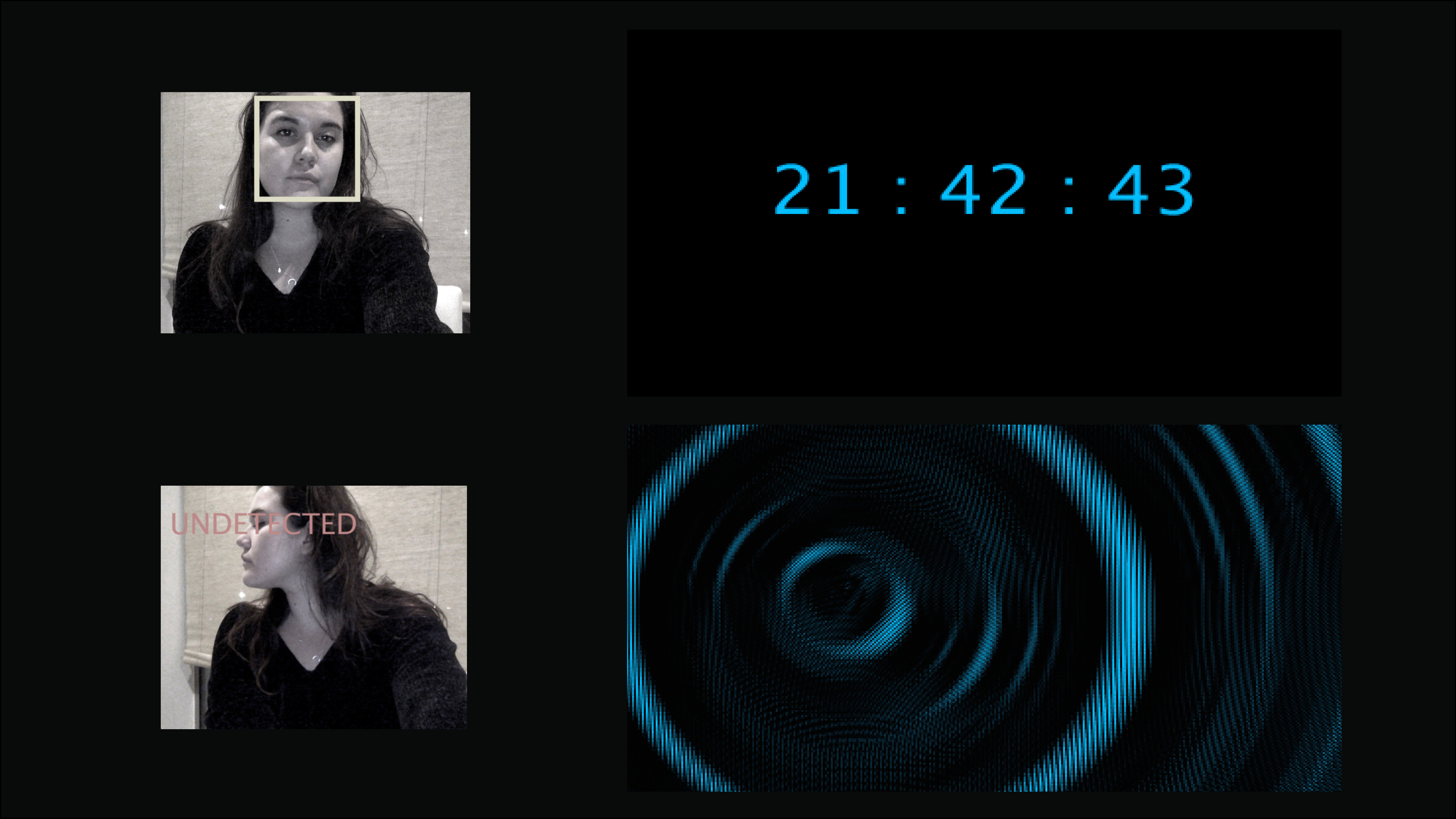A Watched Pot Never Boils
produced by: Giulia Monterrosa
CONCEPT AND BACKGROUND RESEARCH
By constantly being watched, monitored and analysed, we leave behind endless digital traces, which give away much more information than we think. Through our data it is not only possible to discover our digital entity - a projection of our behaviours and interactions - but also to make assumptions about us.
Through this project I wanted to explore surveillance technology and its applications, symbolising the notion that, even when we are not watching /using / interacting with them, these systems are constantly listening, capturing and elaborating our data. Not to mention that they actively engage with their users by sending constant notifications, constructing a valuable bond between the user and the object.
By using the OpenCV library for Processing, I have taken advantage of the face detection algorithm to create a physical interaction with the processing sketch, in order to identify when someone is looking at the screen, or looking away.
When the user is looking, all they can see is a clock showing the time. But as their gaze moves away from the screen, the program displays a new graphic interface which is simulating the water ripples effect, and it starts playing the sound of water boiling inside a kettle. Brian Sentance (2016) has depicted the analogy that data is like water: water is the source of life; in the digital economy, you could argue that data is equally vital. Water is valuable, but can also be disruptive or destructive.
DESIGN AND TECHNICAL
The ripples of the water interface are the result of a grid of lines which constantly vary and rotate, creating flexible patterns. The movement of the ripples are affected by two sets of data that the program elaborates and stores from the face detection:
- Position of the face - origin point of the ripples : the latest position of the centre of the face that gets registered from the face detection defines the coordinates of the origin of the ripples.
- Face’s distance - depth of the water : in order to distinguish faces, OpenCV draws rectangles around them. By using the length of the width and of the height of said rectangles, it is possible to estimate the distance of the face from the screen. Those values are used to define the length of the lines which create the visuals. The closer the face is, the longer the lines become, creating a deep/black effect. The further away the face is, the shorter the lines are, creating neat circular ripples.
Another event that occurs when the user is looking away, is sound. I was inspired by the saying "A watched pot never boils", which implies the importance of time and patience, as well as the idea that things seem to be happening faster when you are not waiting for them. The audio of water inside a kettle, which persuades to look back at the screen, also recalls the effect of "notifications" that surveillance technology often uses in order to get the user’s attention and consequently gather more data.
The sound, which is supported by the Minim Audio library, is also another factor that determines the movement of the water. Through the agency of the beat detector for the sound energy, every time a beat is detected it gives a sharp and impetuous pulse to the angle which makes the lines of the ripples rotate.
REFERENCES
Agre, P. (1994)
‘Surveillance and capture: Two models of privacy’
The Information Society. 10, pp. 101-127.
Bowen, D. (2011)
Tele - present water [data-driven installation]
Available at: https://www.dwbowen.com/telepresentwater
(Accessed: 27th December 2019)
Kip Clips (2012)
Kettle Boiling
Available at: https://www.youtube.com/watch?v=R2XY1aDtqe4
(Accessed: 2nd January 2020)
Levin, G. (2006)
"Computer Vision for Artists and Designers: Pedagogic Tools and Techniques for Novice Programmers".
Journal of Artificial Intelligence and Society
Vol. 20.4
McMullan, T. (2018)
'How Technology Got Under Our Skin’
Available at: https://medium.com/s/story/how-technology-got-under-our-skin-cee8a71b241b
(Accessed: 22nd December 2019)
Sentance, B. (2016)
'Data lineage: The Water Analogy'
Available at: https://www.linkedin.com/pulse/data-lineage-water-analogy-brian-sentance
(Accessed: 22nd December 2019)




































































